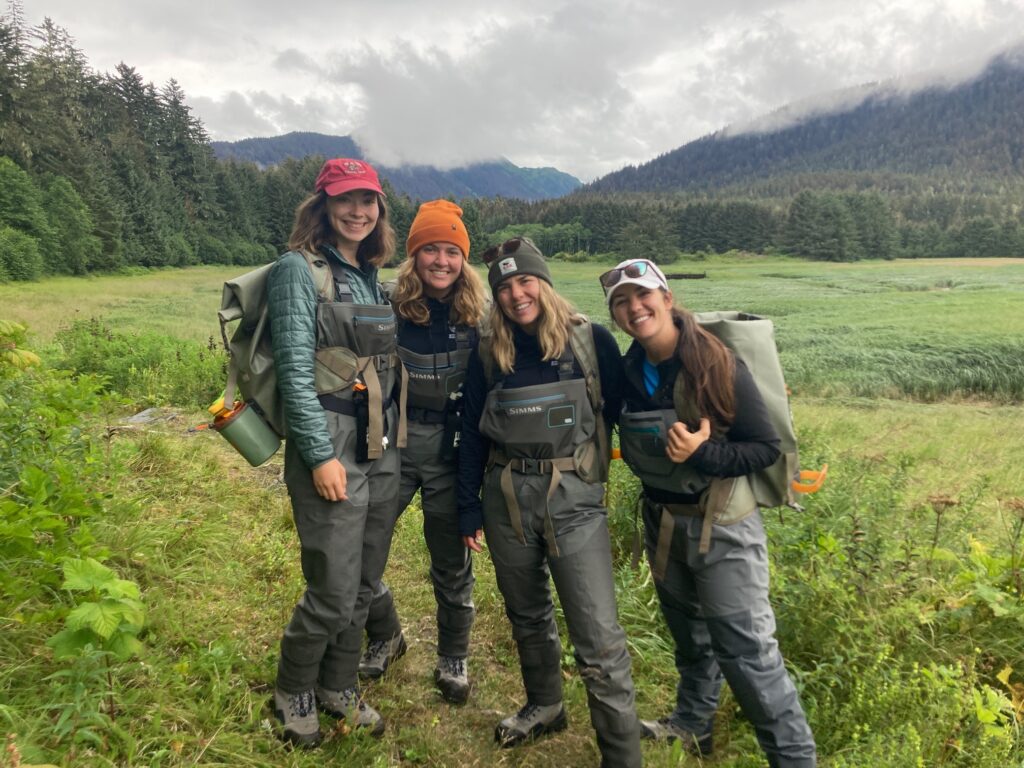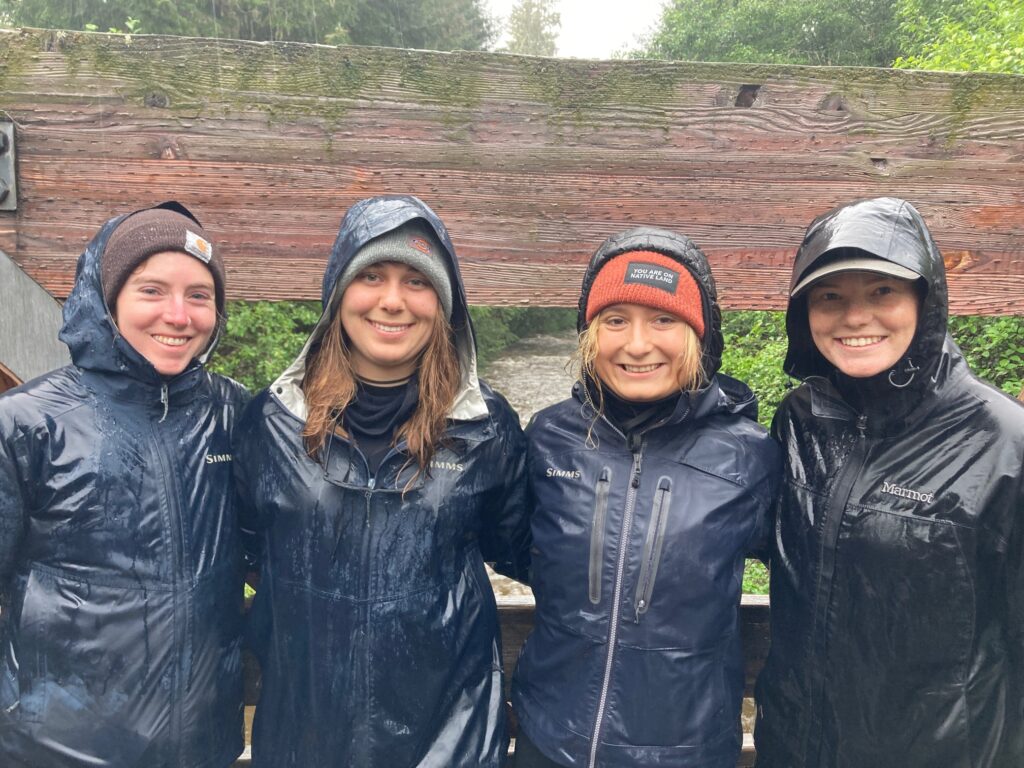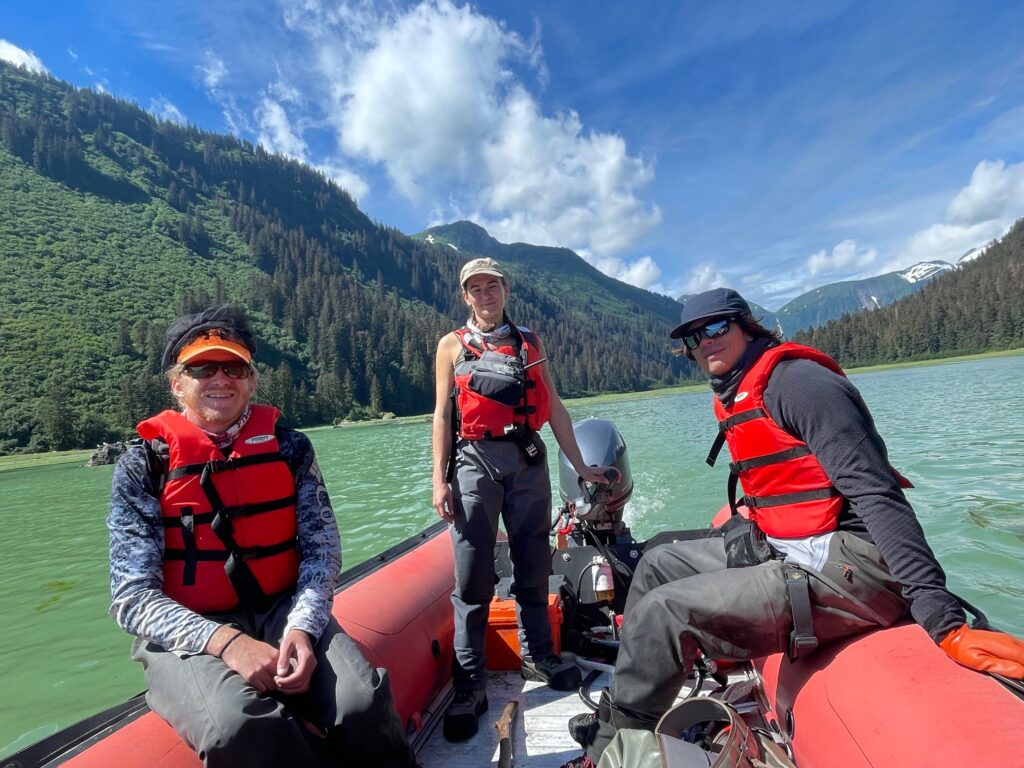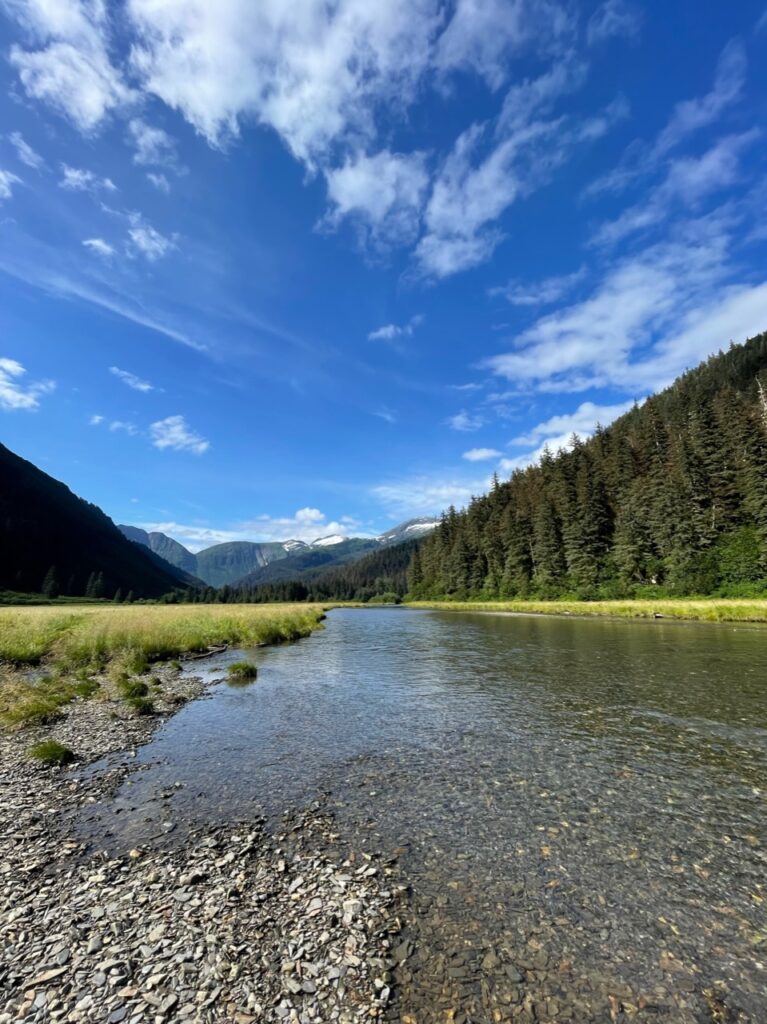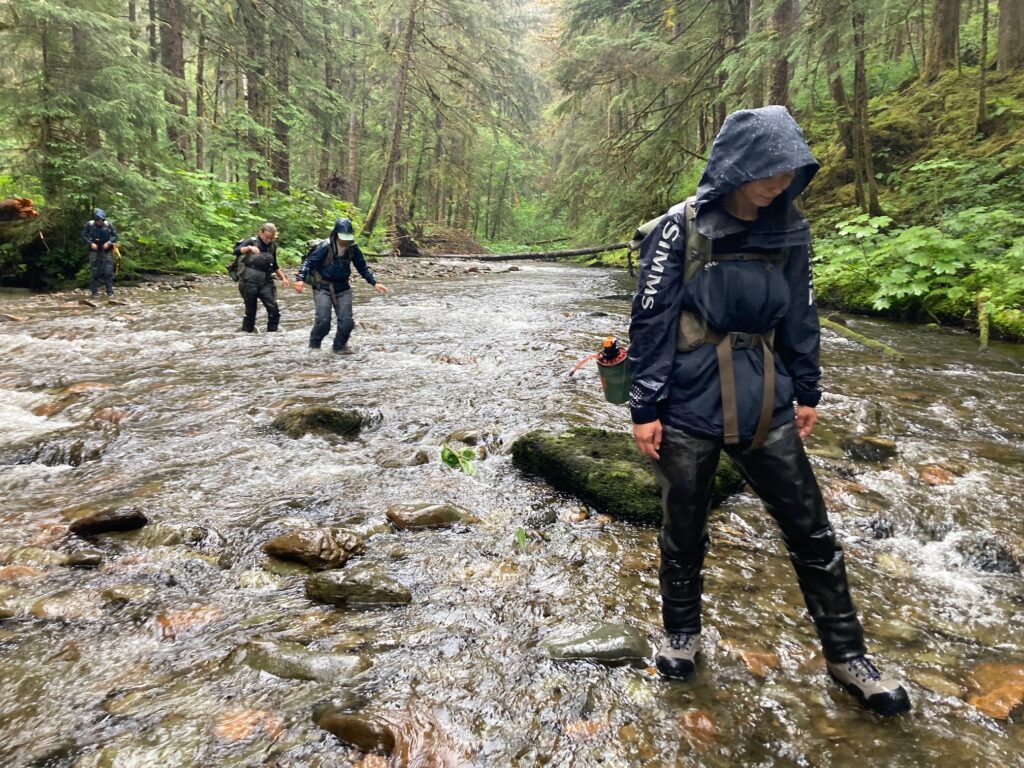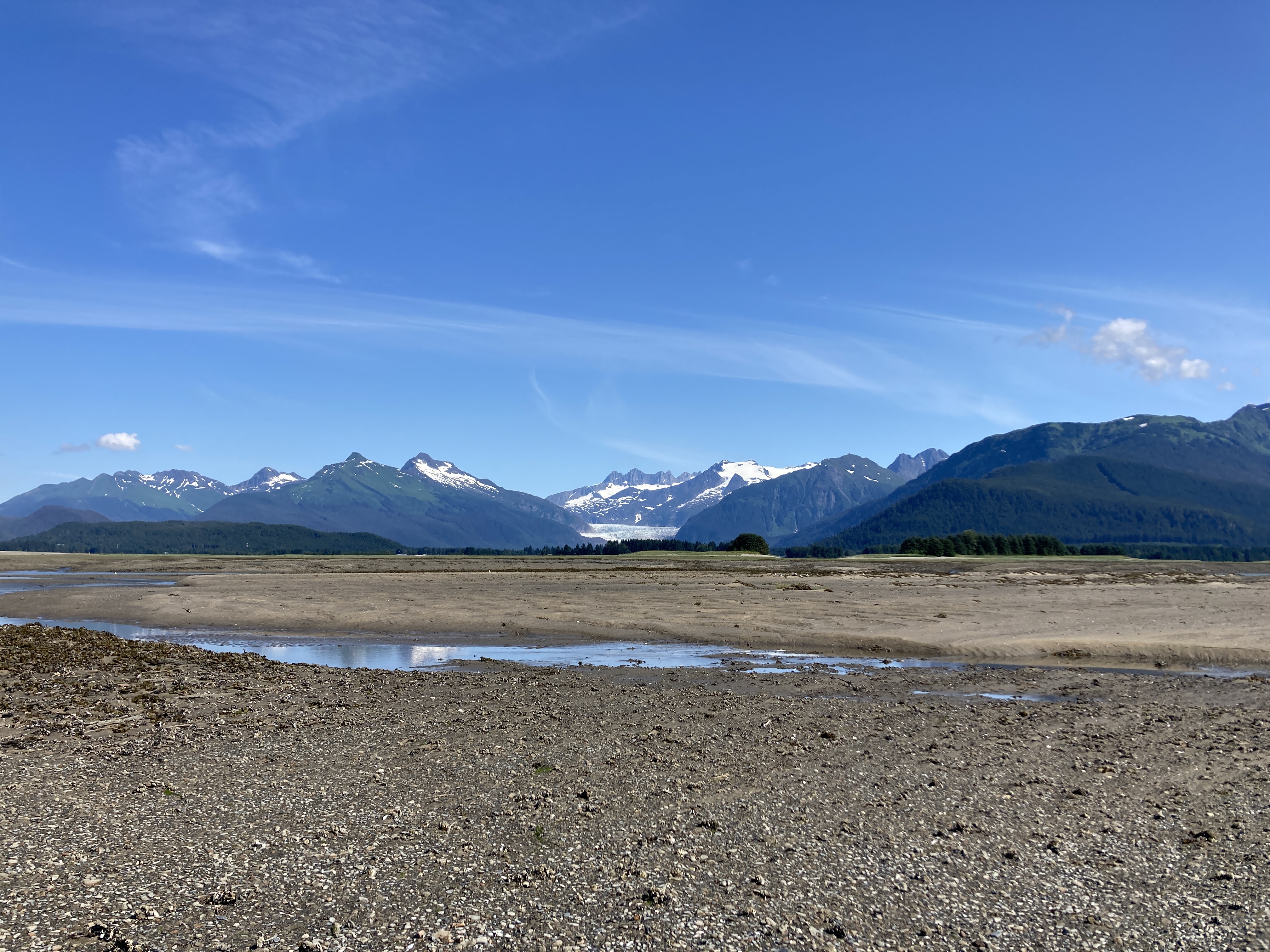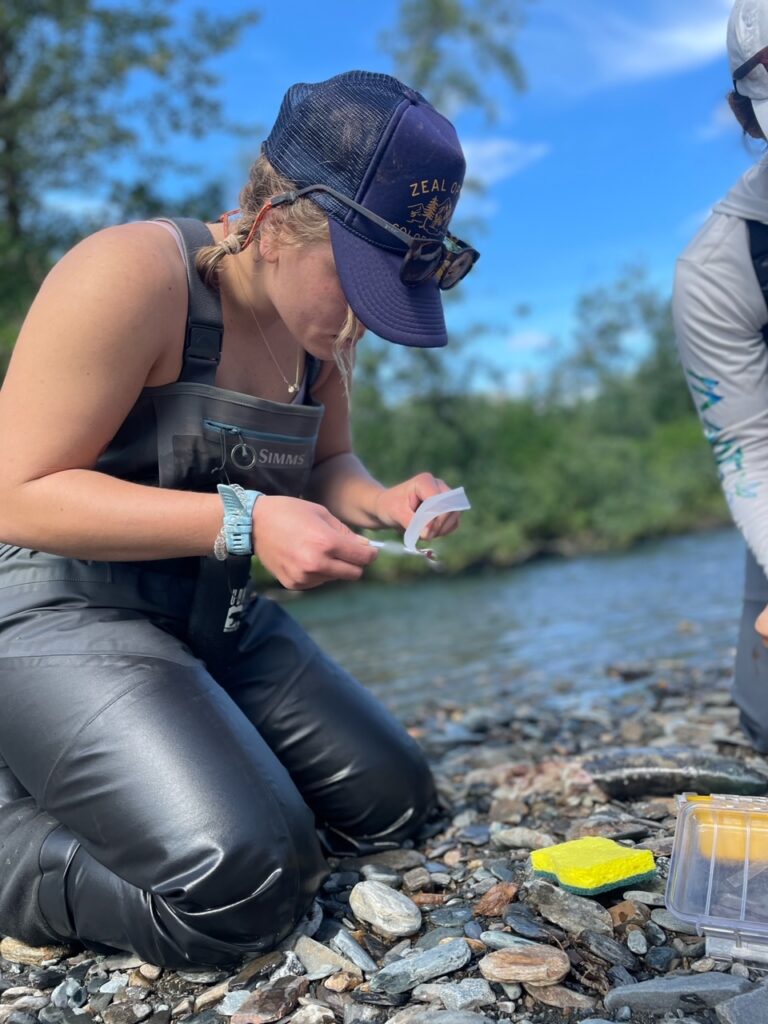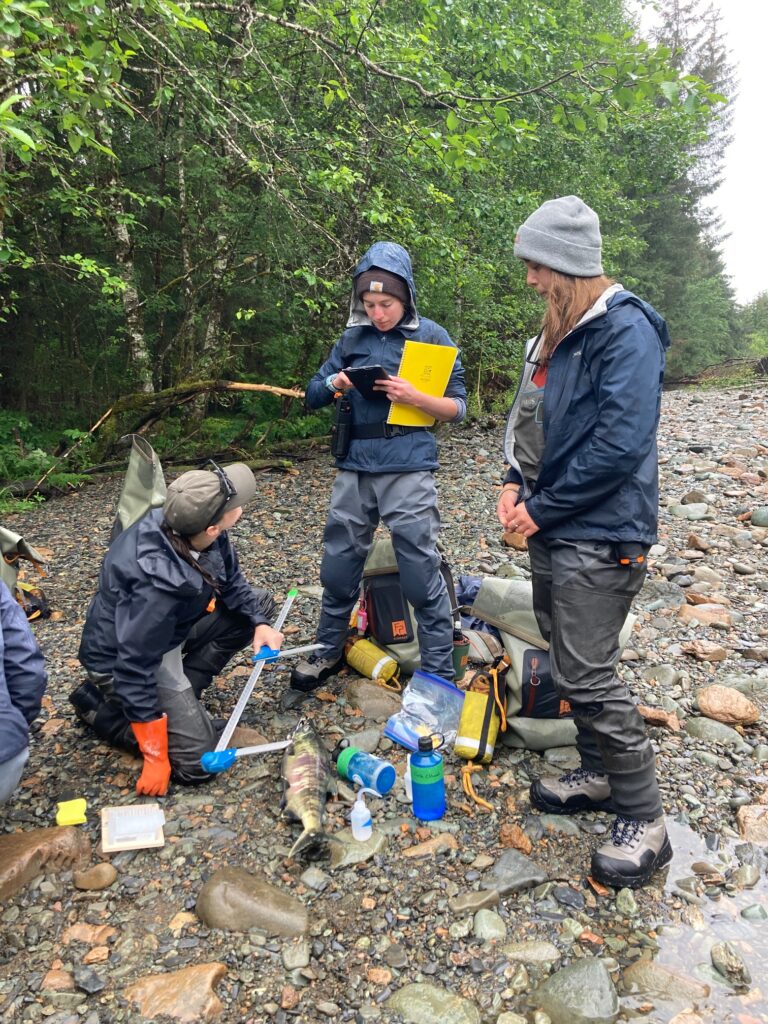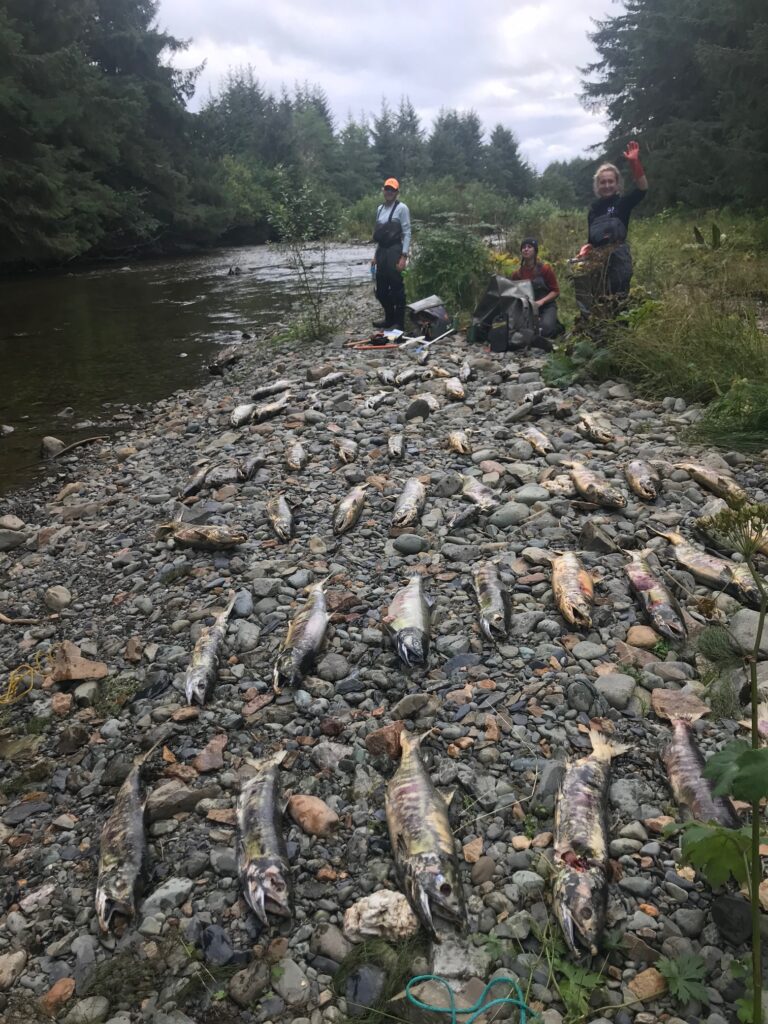
Research
Research
Research
Best Fishes as the Chum Project Wraps Up!
After six weeks full of stream walking and carcass collection, our 2022 Chum Project season has come to an end, marking the 10-year anniversary of this project! The Chum Project was created as a response to a growing body of concern regarding the large scale of Alaska salmon hatcheries and the potential impacts on wild salmon productivity and sustainability. The Alaska Department of Fish & Game (ADF&G) and hatchery corporations recognized the need for research studies that address concerns about salmon hatchery straying and the genetic and ecological ramifications between hatchery and wild salmon. Thus the Chum Project was born!
Since 2017, the Sitka Sound Science Center has been contracted by ADF&G to collect life history and genetic information on chum salmon in Southeast Alaska, focusing on the impact of hatchery straying on the fitness (aka reproductive success) on wild chum salmon populations. This summer, we hired 12 hardworking fishery technicians, crew leads, and a bear guard to survey three steams, Fish Creek, Sawmill Creek, and Prospect Creek. Fish Creek is located on North Douglas Island near Juneau, while Sawmill Creek is located in Berner’s Bay, 35 miles NW of Juneau. Prospect Creek is our remote field camp location, 30 miles SE of Juneau in Port Snettisham. Each creek was chosen for this study due to their high proportion of hatchery chum salmon strays.
Over the summer, our team conducted immense amounts of field work using two main survey types, carcass surveys and mark/recapture surveys. During these surveys they gathered data on spawned-out chum carcasses, collecting otoliths, the ear bones of fish. Otoliths allow us to tell if a chum salmon is hatchery or wild in origin. They collected scales that can tell us the age of a fish, and DNA samples to identify a salmon’s progeny. This allows to quantify the impact of hatchery straying on wild chum salmon reproductive success, called a pedigree analysis. The crew also conducted a mark/recapture study, which allows us to estimate the proportion of the chum salmon run sampled for each stream.
Overall, we had a rainy start to the season which hampered the crew’s ability to survey the first two weeks. However, August turned out to be a drier month where we were able to collect solid data! Our tenacious Chum Crew walked over 300 miles surveying the three streams, with preliminary results showing that they sampled over 1500 carcasses. Approximately 300 were from Prospect Creek, 900 from Fish Creek, and 450 from Sawmill Creek. That’s around 500 more than last year! Stay tuned as we wrap up this season and send our samples off to ADF&G to be analyzed, who will then produce results on the straying extent and ages of our sampled salmon!
